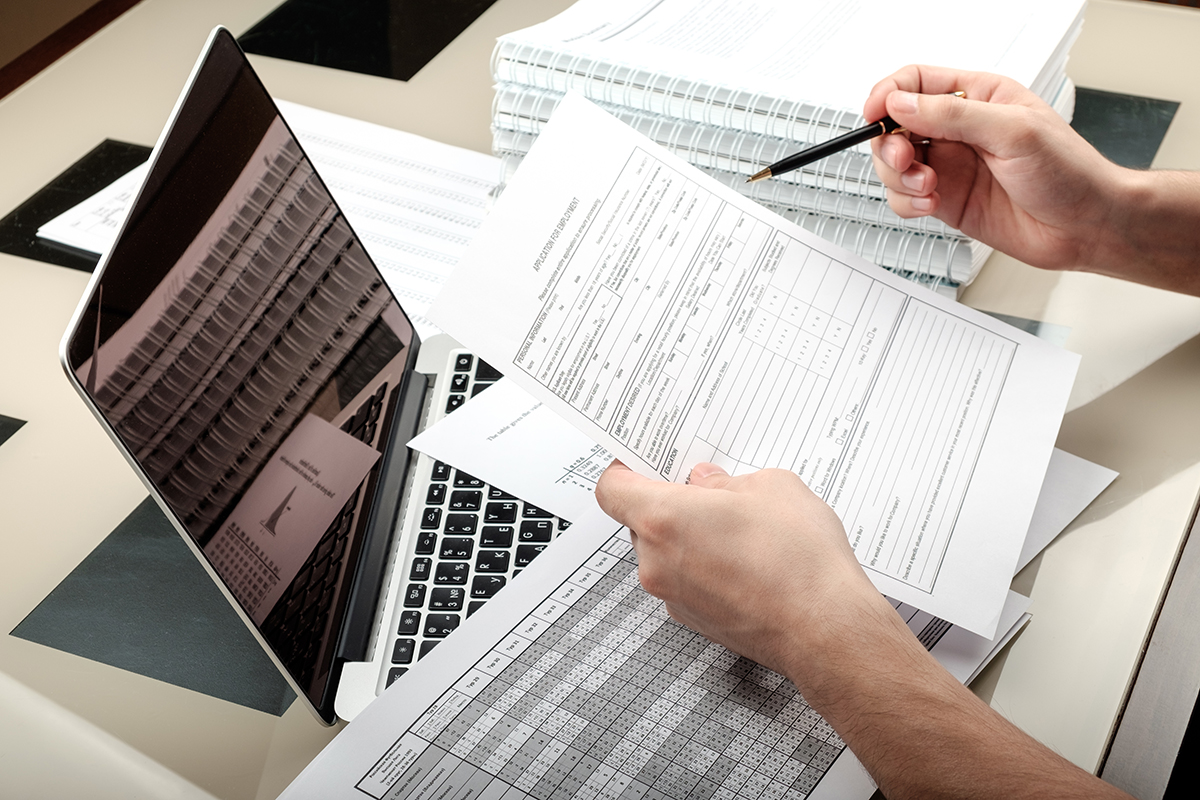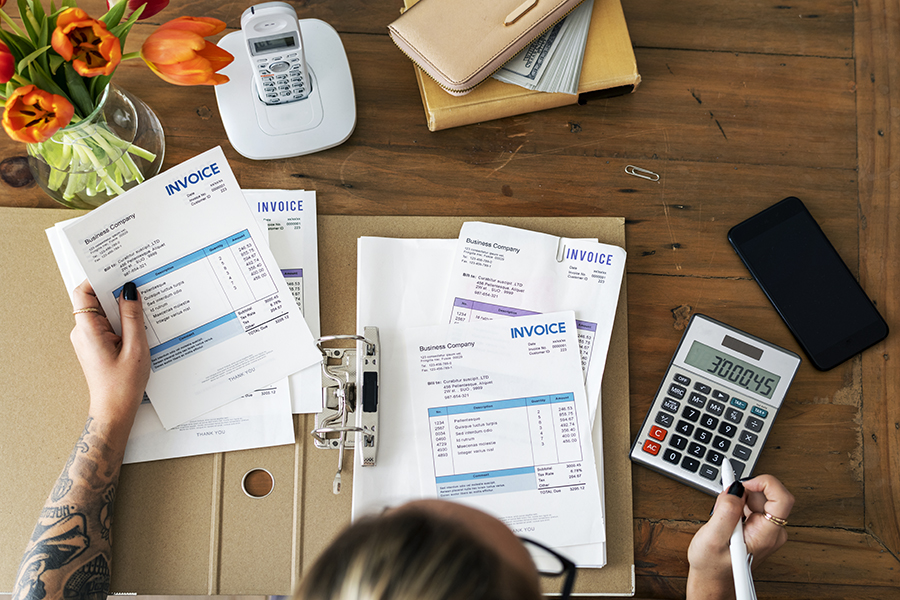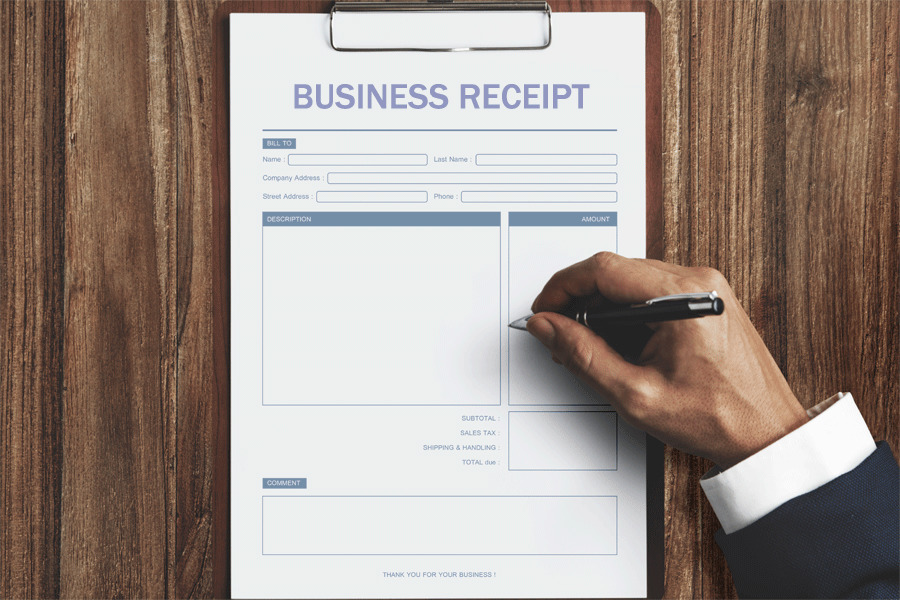Business owners often need to provide their customers with a receipt for goods or services purchased. The most common method of issuing it is through the use of a cash register. However, some businesses that only accept cash as a form of payment may choose to issue a cash payment receipt. A payment receipt records all the information necessary to document a cash transaction. It confirms a customer’s purchase and usually includes the items, quantities, and prices paid for each item and any additional costs associated with the transaction.
Formally,
A Cash Payment Receipt is a legal document that confirms a customer’s purchase and usually includes the items, quantities, and prices paid for each item.
It may also include any additional costs associated with the transaction. The information on a receipt can be hand-written or typed on pre-printed forms. They are usually issued to the purchaser, but they can also be given to a third party on behalf of the purchaser.
Templates
A cash payment template is a pre-made document customized with a company’s specific financial information and branding. In addition, this document provides basic guidelines for adding additional company information, such as logos or contact details, to create custom receipts that meet the needs of individual businesses.
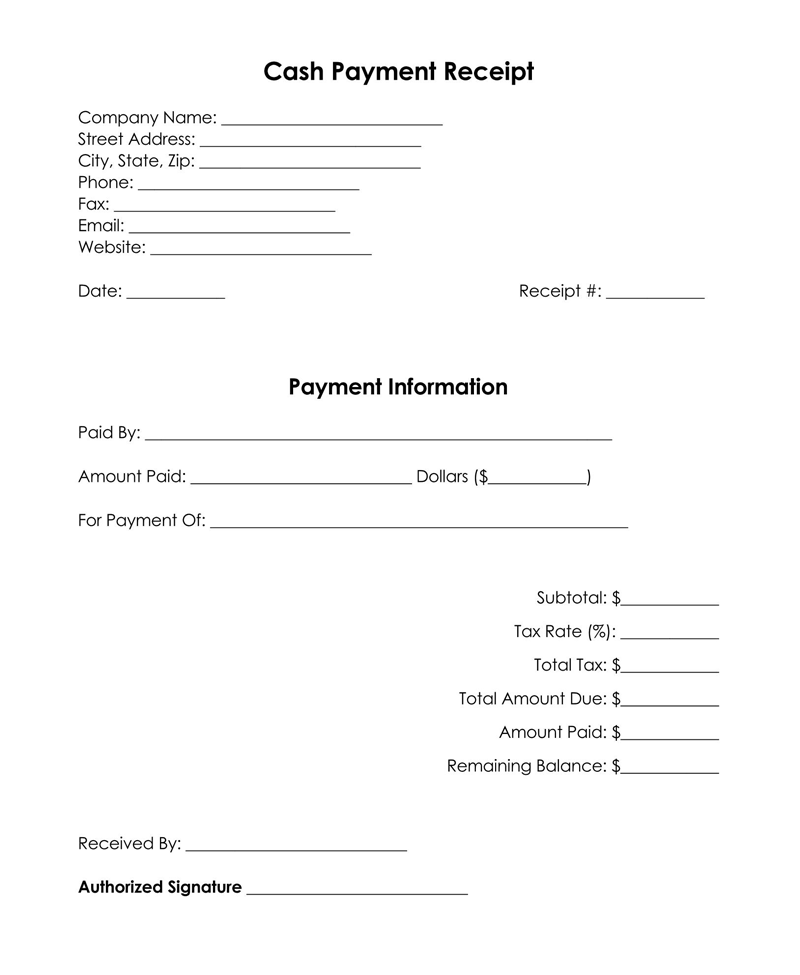


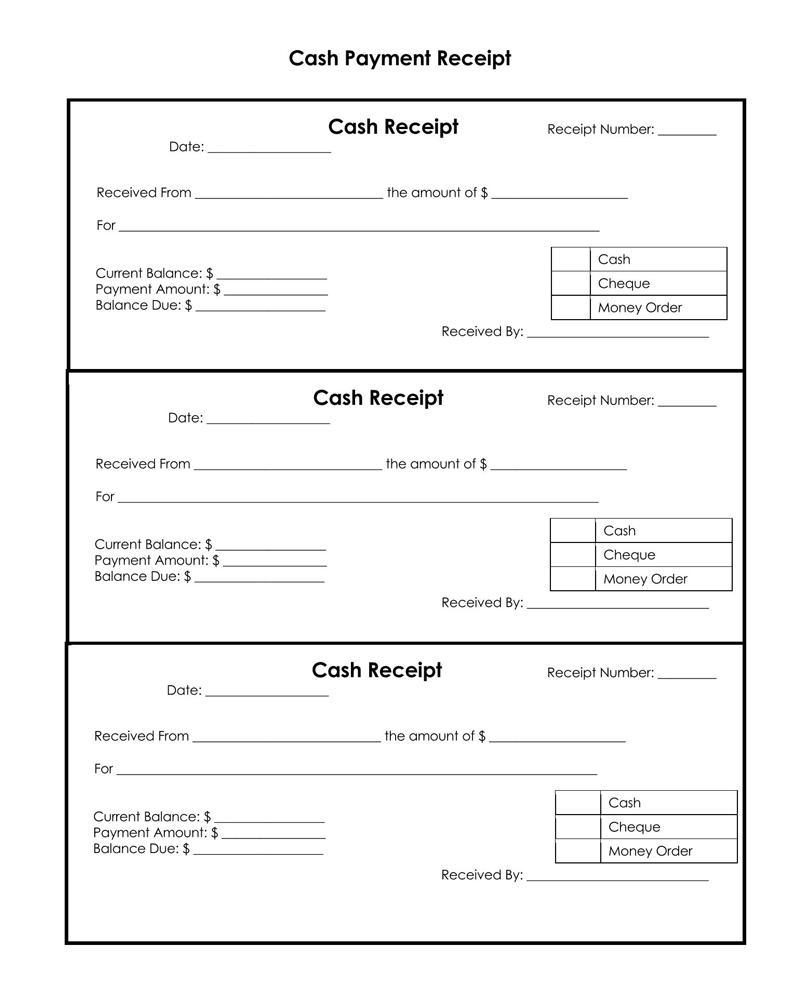



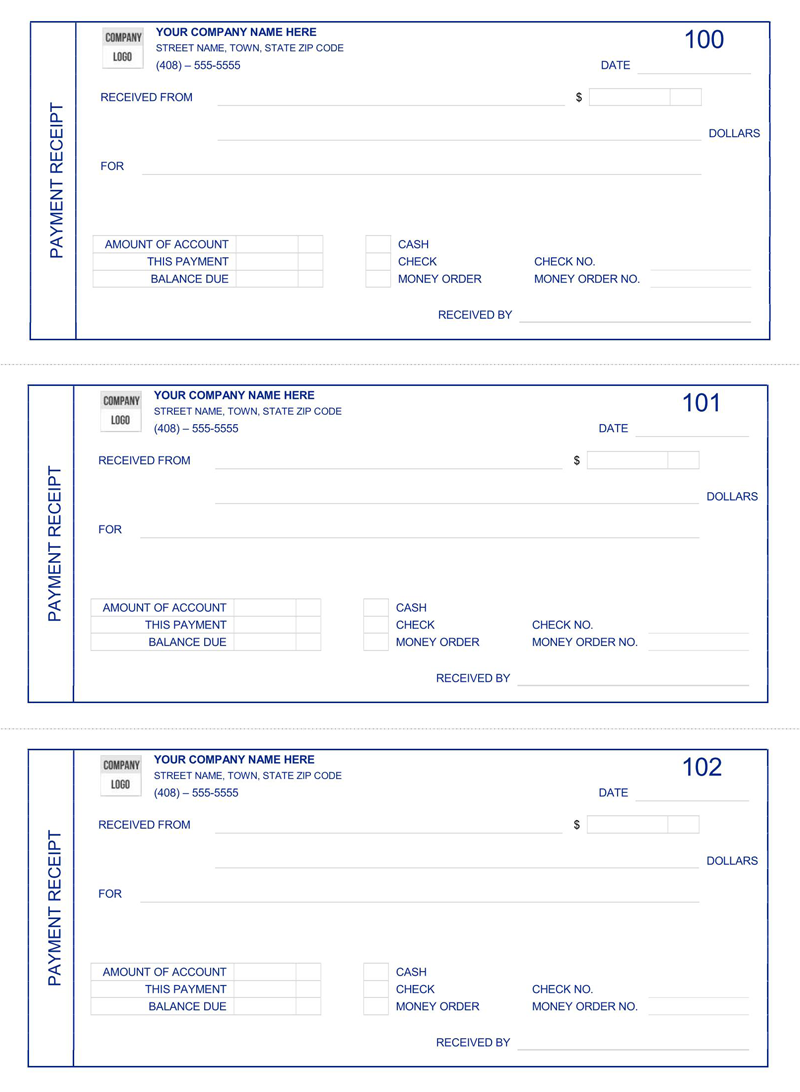
When to Use It?
It is a document that acknowledges that a given business has received a set amount of money from its customers. The purpose is to provide a means for the customer and business owner to keep track of each transaction made at the establishment, regardless of when or where it occurred.
These can be given to customers as proof of purchase for items that have been bought. As a result, most businesses maintain their receipts that can be stored digitally or physically.
Importance of a Receipt
Depending on their needs, there are several different types of receipts businesses may choose to use. For example, a simple one may contain little information beyond the date and time of the purchase and primary contact information for the business.
On the other hand, a more detailed receipt will include all pertinent product and service details, such as itemized lists of all goods and prices, taxes included in the transaction, and any additional payment details.
These are helpful for various reasons, including:
- They can serve as both a legal record of the transaction for the business owner and documentation of payment for customers. In addition, they display all legally required information that customers need to file reimbursement claims or tax deductions if they are required to do so.
- Such a receipt can also help businesses manage their inventory and charge customers for only the goods and services purchased by them. In this way, it allows business owners to track expenses to determine which goods generate high profits to be sold more heavily in the future.
- They also provide business owners and their customers with documentation of any additional payments made by their customers, such as tip amounts or refunds issued for returned goods. This information can be used to track both individual transactions and patterns among customers’ spending habits.
How Does It Work?
There are three main steps involved in making cash payments for goods and services in any business establishment. These include:
Step 1: Make a deal
To create such a receipt, business owners first need to agree with their customers about how the transaction will be conducted and what information they need to receive money. This information can include items purchased or specific details on quantities and costs paid for each item purchased.
Step 2: The exchange
After an agreement between a business owner and their customer, the seller will provide a set of services to a client. The client then pays for those services by bringing cash or another form of payment to the seller.
Step 3: Issuing the receipt
Once the client has paid for their goods or services, they will receive a cash payment receipt containing all the necessary information to document their transaction with the business. This can include itemized lists of products and prices paid for each good, along with any additional costs associated with the transaction, such as taxes.
Depending on how detailed a given receipt is, a business owner may also include the date and time of the purchase, company contact information, and any additional notes or comments.
Key Elements of Receipt
The receipt should contain the following information to be complete and legally compliant:
- Date of transaction
- Businesses selling goods or services
- Type or types of items sold (services, products, or both)
- The total amount paid by the customer for each type of item sold
- Any additional charges, such as taxes added to the total amount paid by the customer
- Additional information or comments that may be relevant to the transaction. This could include information about specific products purchased or other notes detailing essential details about the purchase.
How to Create a Cash Payment Receipt
Several standard elements should be included in a receipt. For a receipt to meet legal requirements, the following information needs to be provided:
- Recipient’s information: This includes the seller’s contact information, including the name and address of the business or store.
- Company’s address/contact information: This should include a company’s legal name and a mailing address, a telephone number, or email contact that can be used to contact the business if more information is required.
- Date: The date should be the date when the transaction occurred. It is important to note that the date of the receipt is not necessarily the same as the date on which payment for a transaction was made.
- Transaction ID/receipt number: The transaction ID will enable customers and sellers to track their receipts if any issues arise, such as incorrect charges or missing refunds. The transaction ID can be any number assigned by the seller to enable them to track it.
- Name of payer: The payer’s name should include a customer’s full name, typically used when paying for goods and services in person. It can also include a company’s name if paying for goods or services on behalf of the business.
- Amount paid in numbers and words: This should be the total amount paid by a customer, and it includes the amount in numbers and words.
- For which good/services amount is paid: This should indicate the specific type of goods or services purchased by the customer.
- Subtotal: This should be the amount paid by a customer before any taxes or fees have been added to a transaction, and it shows what a customer has already paid for their purchase before other charges are added.
- Sales tax: This is the total amount of sales tax charged to a customer based on their goods and services purchased, and it represents the total amount of tax fees charged by a business based on their sales transactions.
- Remaining amount: The remaining amount is the difference between what a customer paid for the goods or services they received and what they owe to complete their purchase. This amount can also be called a “balance due.”
- Date due: The due date is when a customer must make their remaining payment to complete their purchase. It can be represented in words or numerical data format.
- Signatures of recipient: The recipient’s signature should include the name and title of the person whose signature authorizes the receipt and their position within a company.
Frequently Asked Questions
Cash payment is an amount of money paid in cash, meaning physical paper bills or coins. It may also be electronic money loaded onto a prepaid debit card or gift card.
There are two ways to prove your receipt – physical paper receipts and electronic receipts. Both forms must include your business name and address, the amount of money received, and a description of what was purchased.
By law, you don’t have to issue a receipt if a consumer pays in cash. So, although it’s a good idea, it shows there is a paper trail of money going from the business to the consumer.
The best way to make your receipt look professional is by using a computer printer. You can print them out on blank white paper, or you can pre-print receipts with your business name and address on blank paper before each transaction. If you do not have a computer printer, hand-write the information onto the receipt form with black ink.
There is no specific dollar amount that determines whether a transaction requires a receipt. However, it is best practice to issue it for every payment. It is also helpful to always issue receipts for payments made with cash. This act prevents possible disputes between parties if one party claims you did not receive money from another person.
If someone pays you in cash, use a phrase such as “Paid in Full” followed by the date to indicate that someone has paid you all of the money they owe you. For example: “Paid in Full May 10, 2018.”


